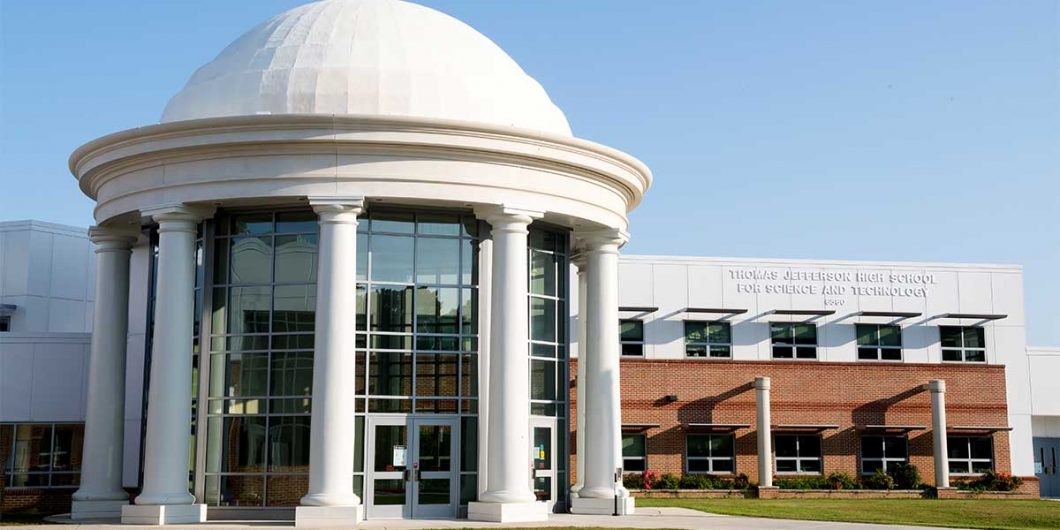What would an action program renouncing ethnic categories and embracing individualistic liberalism look like?
Making Sense of Diversity in Our High Schools
A hallmark of modern progressive politics is its focus on “underrepresentation.” Whether it is in terms of selecting football coaches, judicial nominees, or corporate and non-profit boards, there is a demand that institutions address the problem of underrepresentation—the idea that there are not enough members of a certain group in the organization. Sometimes that mandate can be satisfied by proportional representation, but, if a group is deemed marginalized, some sort of preferred accommodations or even reparations may be thought necessary. In any case, it is a group based rather than individual rights perspective which requires implementation.
What groups are considered underrepresented? That depends on the particular organizational context involved. Precise definitions of careful rationales are elusive. All people of color or only some racial groups? What to do about white Hispanics or the growing number of persons of mixed racial backgrounds? Women are underrepresented in some fields, but overrepresented in others. Should there be efforts to create equal outcomes for males and females in all fields or only in some? What about identities that are not immutable, but may be acquired as, for example, gender, religion, political or ideological variations? Then there is the question of underrepresented compared to what population. Some general population in a city, county, state, or the whole country? Or to people with similar ages, interests, skills, or credentials? Should the student demographics of a school be represented also in faculty demographics? Finally, how do these group-based remedies comport with civil rights laws such as Title VI, Title VII, Title IX, and the Equal Protection Clause of the 14th Amendment that require equal treatment of individuals?
These struggles exist throughout American society, but perhaps most pervasively in education. Increasing group representation is often justified under the Diversity, Equity, and Inclusion rubric whose concepts on many campuses are ambiguous. Sometimes curing underrepresentation is mandated by professional organizations or statewide systems, while other times it comes by campus initiative. For example, American University has announced a 2022 Summer Diversity Academy for “scholars under represented among public affairs faculty to receive quality feedback on research projects and mentoring advice on strategic planning of academic careers.” Successful applicants will receive transportation, lodging, and meals. Aided by a grant from the Mellon Foundation, the University of Maryland College Park, the University of Maryland Baltimore County, and Morgan State University (an HBCU) have announced a program for 8 to 10 faculty leaders, “especially women and those from underrepresented minority groups. . . . to create a pipeline to senior leadership in higher education.” There will be a fifteen-month leadership program with $10,000 grants, including course release, summer stipends, subvention grants or writing/workshop retreats, and attendance at conferences. For this cohort, there is also an additional opportunity for competitive awards of up to $50,000 for “seed and research grants.”
There is one arena, however, where attempts to solve underrepresentation problems have led to overt discrimination against the individuals from groups thought to be overrepresented and have led to fierce, well-publicized debates over the mechanisms employed. Competitive exam-based high schools have been attacked by politicians in Boston, Fairfax County, New York City, and San Francisco. The efforts to change the demography of their student bodies have had mixed success.
Recently, however, a federal district court decision on one of these reshuffling campaigns has reached the Supreme Court. Coalition for TJ v. Fairfax County School Board was decided originally on February 25, 2022. TJ is the Thomas Jefferson High School for Science & Technology in Alexandria Virginia. It is one of the 18 Governor’s or regional magnet schools in the state and ranked consistently among the most rigorous and best high schools in the nation. Less than 20% of the applicants to the school are admitted to its 1800 student body. Traditionally to be considered for admission, in addition to residence restrictions, eighth graders had to take three standardized tests in mathematics, reading, and science. After achieving minimum test scores, admitted students were selected “based on a holistic review that considered GPA, test scores, teacher recommendations, responses to three writing prompts and a problem solving essay.”
The 200-member Coalition was formed to support the existing entrance requirements which yielded a student body that was 71.97% Asian American, 18.34% white, 3.05% Hispanic, and 1.77% Black. The problem, as the School Board saw it, was that in the County as a whole, 36.8% of the students were white, 27.1% Hispanic, 19.7% Asian, and 10% Black. Thus, every other group but Asian Americans was underrepresented at TJ, though the Board appeared concerned only about Hispanics and Blacks. Furthermore, in 2020 the Virginia General Assembly enacted a requirement that each of the Governor’s schools develop diversity goals to promote access for historically “underserved” students. So, while maintaining some of the previous admissions requirements, the Board removed the standardized test requirements and added “Experience Factors,” which included attendance at a school historically underrepresented at TJ, eligibility for free and reduced lunch, status as an English language learner, and status as a special education student.
Does the Court’s Thomas Jefferson High School vote portend the outcome for college admissions or were swing Justices avoiding any premature signaling?
The changes worked partially as the Board intended. Asian American admits fell to 45.59% for the class of 2025, though admissions for Black students also decreased. Consequently, TJ’s Principal Ann Bonitatibus wrote to the TJ community that “recent events [George Floyd’s murder] in our nation with black citizens facing death and continued injustices remind us that we each have a responsibility to our community to speak up and take actions that counter racism and discrimination in our society.” She went on to say, if TJ reflected the racial composition of the District pupils, hundreds more Black and Hispanic students would be enrolled.
Afterward, several Board members declared their intention to address the underrepresentation problem again. The Board did not claim it was remedying any current or previous identified discrimination at TJ and no study of the educational benefits of racial diversity at TJ was performed. The issue was squarely about compensating for underrepresentation of two groups. At first, the Board considered instituting an admissions lottery. Facing some objections, the Board settled on giving a percentage of admissions to each feeder middle school with the result that only about 100 seats remained for open competition. Before that plan could be implemented, the TJ Coalition with the support of the Pacific Legal Foundation sued to stop it. (A full history of the case can be found in a March 9, 2022, Federalist Society YouTube interview with Nicole Neily, the President of Parent Defending Education. That organization also has a comprehensive set of case documents on its website).
Judge Claude J. Hilton’s decision was focused on the effort to create racial balancing at TJ “to the detriment of Asian Americans. . . . [where] Board members sought to use geography to obtain their desired racial outcomes.” The major issue confronting the Court was: if the feeder school formula was formally race-neutral, but nevertheless motivated by racial goals, does strict scrutiny still apply? Citing Supreme Court precedent, Village of Arlington Heights v Metro Housing Development Corporation, he found that the relevant factors were (1) the impact of the official action; (2) the historical background of the decision; (3) the sequence of events leading up to the challenged decision; and (4) the legislative or administrative history of the policy. The motivations need not be primarily racial or be triggered by racial animus, he concluded, if the policy had an intentionally adverse effect on an identifiable group.
Given these criteria, Judge Hilton found the Board’s policy changes were subject to strict scrutiny and thus an examination of the disparate impact of the Board’s new policies was warranted. The negative statistical consequences for the admission of Asian American students were indisputable, so the issue turned on Board intentions. Since the State was demanding more diversity in the Governor’s schools, several Board members thought quick action regarding TJ demographics was necessary, even if that meant procedures the Court later found were “rushed and shoddy.”
Although some Board members tried to compare its proportional representation goals to the diversity argument in higher education, Judge Hilton noted that the Supreme Court had refused to extend the diversity rationale to K-12. (Parents Involved in Community Schools v. Seattle School District No.1) Further, the Court even held, in the context of higher education, that “racial balancing for its own sake is “patently unconstitutional.”(Fisher v University of Texas at Austin) Although the Judge did not mention it, why should such a group of people who may have different national origins, immigration experiences, languages spoken at home, religions, vocations, and incomes be condensed into a single Asian American category and thought not be diverse and thus overrepresented?
When the Fairfax County School Board sought a stay of the Judge’s order before an appeal to the 4th Circuit, Judge Hilton denied it. A few weeks later, the 4th Circuit by a 2-1 vote granted the stay, so the Pacific Legal Foundation filed an emergency appeal to the Supreme Court. There the case attracted considerable attention. The Virginia Solicitor General and 15 state attorney general weighed in to support the TJ Coalition. Nevertheless, on April 25, the Supreme Court denied the TJ appeal sending the issue back to the 4th Circuit. Technically, the denial of a stay by any court is not a decision on the merits, but the Circuit panel had already expressed considerable skepticism about Judge Hilton’s reasoning.
The 6-3 split on the Supreme Court is intriguing, with Justices Alito, Gorsuch, and Thomas voting to deny the stay. What does that vote portend regarding the impending Supreme Court rulings about Harvard and University of North Carolina admissions policies, where it appears Asian Americans were also disadvantaged? Briefs in these cases are already being filed and decisions are expected by the end of the next term. Does the Court’s TJ vote portend the outcome for college admissions or were swing Justices avoiding any premature signaling? Or was there a concern to be fully articulated when the TJ case on the merits is finally considered by the Supreme Court—a reason that admission decisions at the K-12 level are different than college admissions and that seeking proportional representation is different from seeking diversity?



